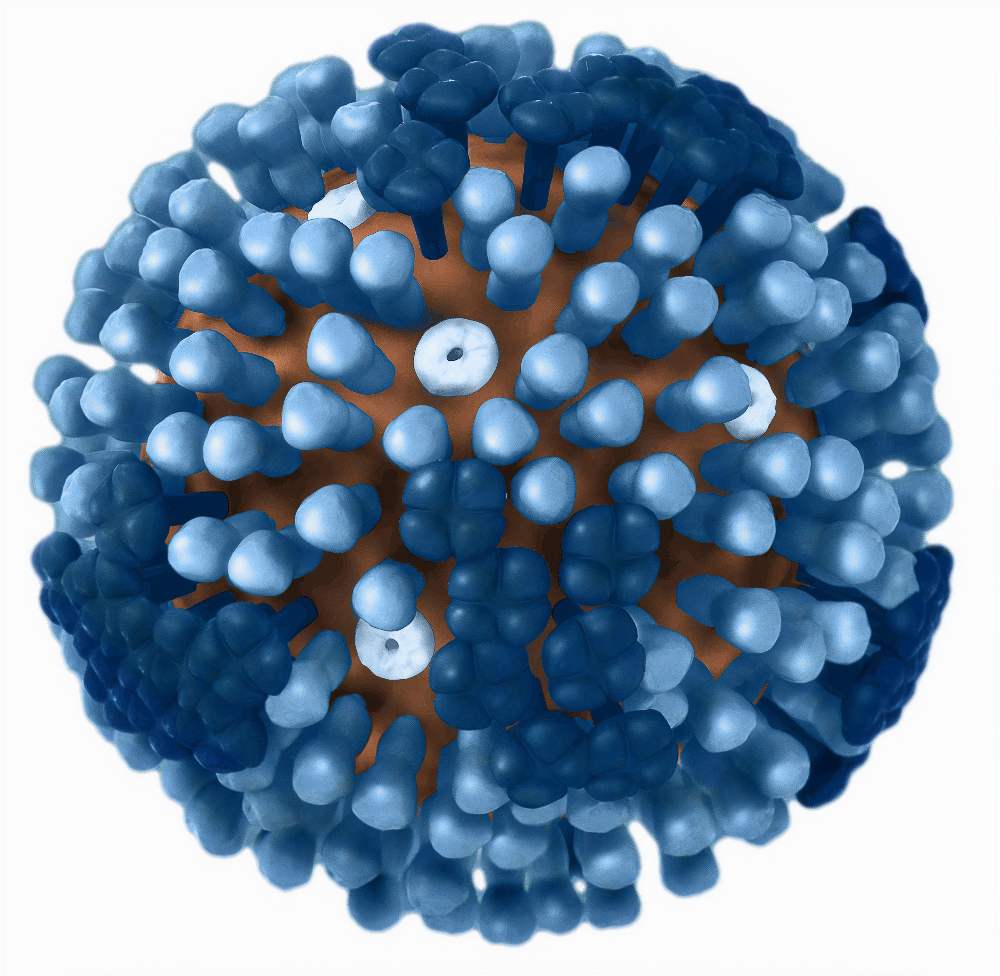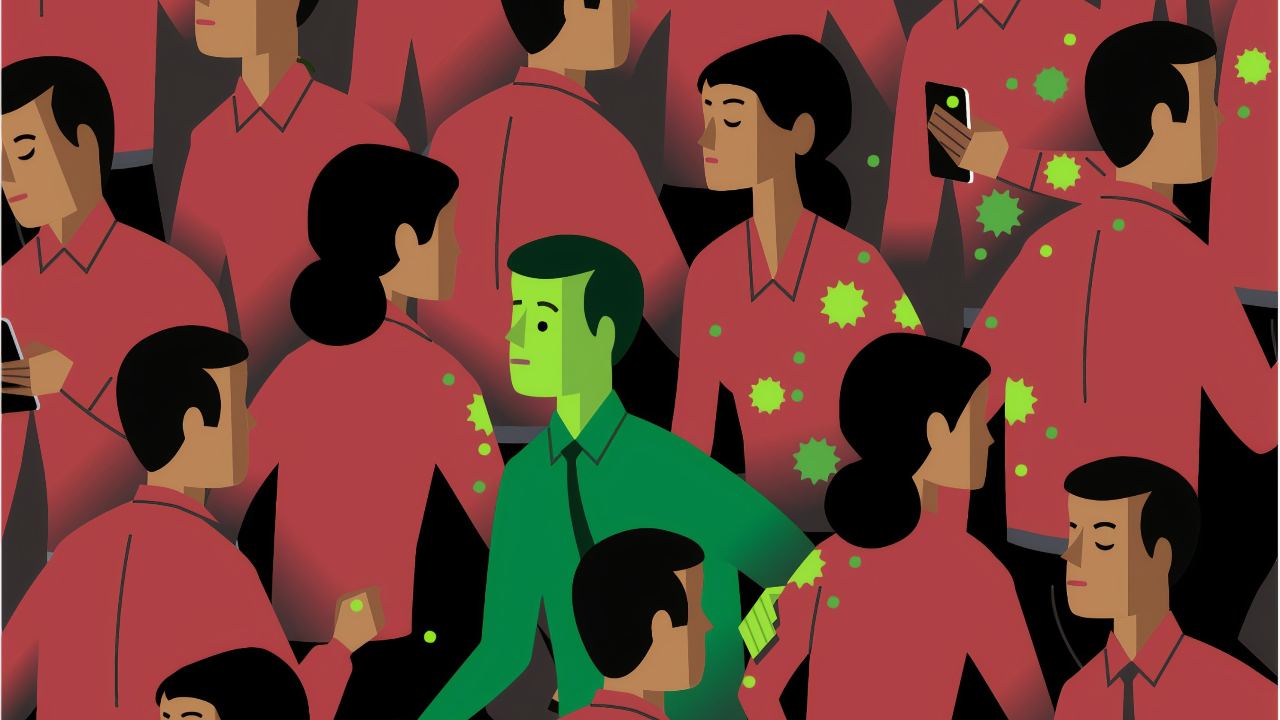It has been five months since the first COVID-19-infected patient was discovered in Wuhan, China, four months since it was declared a pandemic and a little above a month since a lockdown was enforced in India. The coverage is extensive and the data is daunting. The virus has spread to 212 countries and the number of infected patients has skyrocketed along with the death tolls. Universities, pharmaceutical companies and health care agencies are all desperately searching for a treatment that works or a vaccine that can prevent attacks in the future. No stone is being left unturned with researchers synthesizing new vaccines or dipping their hands into older vaccines that were abandoned. Every avenue searched methodically and every alley peered into and yet this virus manages to surprise us (humanity on the whole, but mostly the researchers working on cures).

Maintaining social distance will help to stop the spread of COVID-19.
The more we discover, the more questions we have.
So let’s start with the basics.
What is SARS-CoV-2, COVID-19 and Coronavirus?
Coronavirus is a family of viruses which means that while they are similar, they still differ from each other. They get their name from the crown-like spikes on their surface. The virus usually infects mammals and birds; in humans, they are known to cause respiratory tract diseases. Coronaviruses in humans were first identified in the mid-1960s and there are four main sub-groups of these viruses – alpha, beta, gamma, and delta.
This virus can cause anything from a common cold to more severe symptoms like those exhibited by people infected Severe Acute Respiratory Syndrome (SARS) or Middle East Respiratory Syndrome (MERS).

The SARS-CoV-2 virus that causes the COVID-19.
COVID-19 is the name of the virus that is sweeping across the world in a pandemic. CDC explains the difference between these three acronyms very simply – COVID-19 is the name of the disease caused by the new coronavirus that is called SARS-CoV-2, or sometimes just “novel coronavirus”(nCoV).
Novel coronavirus because it is a new strain of the virus that has been discovered for the first time.
A strain is a subtype of a virus that is created due to a mutation in the genome (genes) of the said virus.
Viruses are named based on their genetic structure and the International Committee on Taxonomy of Viruses (ICTV) named this virus “Severe Acute Respiratory Syndrome Coronavirus-2 (SARS-CoV-2)” because it is roughly 80 percent identical to the coronavirus responsible for the SARS outbreak of 2003. SARS and SARS-CoV-2, both use so-called spike proteins to grab onto a specific receptor found on cells in human lungs. This also helps explain how scientists developed a test for Covid-19 so quickly.
[embedded content]
What is a virus?
A Virus is small, as How Stuff Works explains, so small that they require a special microscope to be visible. They can only exert influence by invading a cell because they’re not cellular structures. They lack the ability to replicate on their own, so viruses are merely tiny packets of DNA or RNA genes enfolded in a protein coating, on the hunt for a cell they can dominate. They can invade and infect any type of living organism on Earth. They infect other living things via air from coughing and sneezing, via insects like mosquitoes or ticks, or via the transmission of body fluids like saliva, blood, semen, etc. Contaminated food and water are other potential sources of viral infection along with sexual contact and sharing of contaminated needles.
Where do they come from?
An article by Nature explains that there are different theories of the origins of a virus. These are the three main theories:
- The progressive or escape hypothesis states that viruses arose from genetic elements that gained the ability to move between cells;
- The regressive or reduction hypothesis asserts that viruses are remnants of cellular organisms;
- The virus-first hypothesis states that viruses predate or coevolved with their current cellular hosts.
What is a virus mutation?
Technically, viruses are not living things, but they do go through an evolutionary process. When viruses ‘mutate’ they make small changes to the genome. When a virus infects a human body, the body has certain natural defences like antibodies and white blood cells. So the virus needs to find a way around these defences while ensuring that they reproduce within their host as well as transmit to another host in order to keep itself ‘alive’.
In order to do this, they mutate and those new traits that they pick up along the way, that allow them to survive, are passed onto the next generation while those they deem to be useless are lost. The survival of the fittest seen in the smallest of ‘living’ things. Sometimes, they mutate so fast, that at a single point in time, there could be multiple mutated viruses that have similar genes but are still different.
With that out of the way, let’s talk about SARS-COV-2, the virus causing the pandemic.
[embedded content]
Is SARS-CoV-2 mutating?
Yes, it is mutating.
SARS-CoV-2 is a single strand RNA and they usually mutate more frequently than any other types of virus in the world. However, SARS-CoV-2, unlike the other RNA viruses, is doing so at a slow pace.
A report in Scientific American states that “the virus had not mutated significantly as of 31 March 2020; human contact created the pandemic, not a wildly evolving pathogen. Mapping the spread also substantiates actions that could have best mitigated it: faster, wider testing in China; earlier, stricter global travel bans and isolation of infected people; and more immediate social distancing worldwide.”
Different studies have been conducted, to study and understand these mutations as they could control the spread, as well as help, develop an effective vaccine. Each of these studies helps form a bigger and clearer picture of the virus while also giving people working on the cures the information they need to figure things out.
A study conducted in Wuhan, China found that the virus mutations can be classified into two groups – the L type, which is more aggressive and the S type, which is lesser in comparison. The study was published in the journal National Science Review. The L type virus strain was found in 70 percent of the virus samples they studied. However, Live Science reports that the researchers found that the presence of this strain had decreased after early January and now the S strain is more commonplace. The reason: the researchers believe that preventive actions like quarantines, social distancing and lockdown played an important role in stopping the spread of the L type virus.
Another study conducted by another group of scientists in China has found more than 30 mutations of the virus and among them, 19 mutations – or about 60 percent – had never been reported, according to a report in The South China Morning Post. Professor Li Lanjuan and her colleagues from Zhejiang University found that the virus mutates at an average speed of about one mutation per month and confirmed, with proof, that certain mutations could potentially create strains that were deadlier than others.
The COVID-19 infection that started in a wet market in Wuhan has now spread to over 200 countries and two cruise ships, and researchers from universities in Cambridge, UK, and Germany are trying to create a sort of family tree that traces the early mutations of SARS-CoV-2 in humans. Their findings have been published in the journal Proceedings of the National Academy of Sciences. Using international data of the virus genome samples taken between 24 December 2019 and 4 March 2020, they found that there are three distinct ‘variants’ of SARS-CoV-2. They consist of clusters of closely related lineages, which they labelled ‘A’, ‘B’ and ‘C’.
- The original human virus genome, type ‘A’, was seen in Wuhan but was not the city’s dominant virus type. Variants of type A were seen in Chinese and Americans who lived in Wuhan, and in people from the USA and Australia.
- Interestingly, type B was the major virus type found in Wuhan and was found in other patients in East Asia. However, the variant didn’t travel much beyond the region without further mutations – implying a ‘founder event’ in Wuhan, or ‘resistance’ against this type of coronavirus outside East Asia, say researchers.
- Type C is the major variant found in Europe and was found in early patients from France, Italy, Sweden and England. It was not found in samples from China’s mainland but was seen in Singapore, Hong Kong and South Korea.

The mutated virus can spread to the people around you very easily via respiratory droplets.
This study did not look at any samples from India, but the country’s top scientific body — the Indian Council of Medical Research (ICMR) — is looking into getting us some answers as well. They have proposed a study that looks into whether the virus has undergone mutations while it has spread in India, reports PTI. However, they will only be able to begin the study once the lockdown in the country is lifted to ensure that the samples collected from patients infected with the disease are able to reach their destination. Until now, three strains of the virus have been traced – one was from Wuhan, one from Italy and the other from Iran. The genome sequence of the strain originating from Iran is similar to that found in China.
A2a strain dominates the world
A two-member team, comprising Partha Majumder, Distinguished Professor and Nidhan Biswas, Assistant Professor at the National Institute of Biomedical Genomics, West Bengal studied more than 3,600 samples of the SARS-CoV-2 genome collected from around 55 countries. They studied these samples to look for similarities and differences and found that there are at least 11 different strains of SARS-CoV-2 in the world. The original strain of SARS-CoV-2 was named type O or ancestral type. Out of the 3000+ samples, the strain A2a was dominant in 1,848 samples in the world and in India. If a vaccine is to be made, it should be made against this strain.
Majumdar told Firstpost, “We have found that it (the A2a strain) infects humans more efficiently. The A2a has some mutations that provide it with an advantage to gain entry into lung cells of the human being.” The mutation occurred due to a change in a single amino acid — from aspartic acid to glycine — in the spike protein of the virus. The stronger this virus binds to the ACE-2 receptors in the lungs, the more chances of it entering a healthy cell and replicating. However, these mutations can be tracked in an infected patient by “serial sampling, during the course of the infection.”
The Hindu reported that the A2a strain is present in “New York, Italy, Australia, Spain, Iceland, Brazil, Congo… It is not known if A2a type has become predominant in China too as China has not been submitting sequence data for about a month.”
The results from this study have been published in the Indian Journal of Medical Research, run by ICMR. They are now working on increasing the sample size in order to test more people, said Majumdar, and they are “trying to understand how the A2a strain gained greater efficiency in infecting human beings, compared to the other types of this Coronavirus.”
Majumdar said it is important to study these mutations “as a virus can acquire a new function and may become more infectious or more virulent.” By studying them, we also can find those “that are important for the survival of the virus and we can target them.” This will make finding a vaccine, or a cure, a lot easier.
Updated Date: May 08, 2020 19:40:01 IST
Tags : a2a, Ancestral Type, Antibody Tests, China, Coronavirus, Coronavirus Cases, Coronavirus Lockdown, Coronavirus Testing, COVID-19, Cure, Frontline Workers, L Type, Mutation, NCov, Origin Of Virus, Pandemic, S Type, SARS-CoV-2, Strains, Treatment, Types, Vaccine, Virus, WHO, Wuhan Wetmarket
Post a Comment